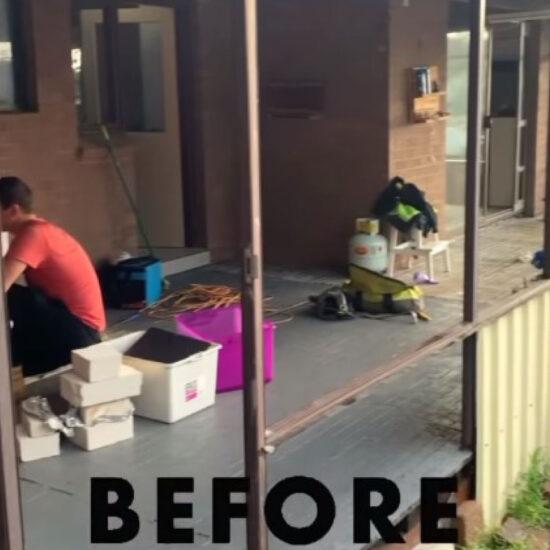
By Werine Erasmus, The Happy Renovator
When it comes to renovation, DIY can certainly save you a few dollars, but, on the flipside, attempting to do it all yourself can also blow out the cost of the project.
If you are capable, a hands-on approach is a great renovation attitude, but here are the stumbling blocks:
“I sort-of know what to do, but I don’t have the right tools”
“I’ve never done this before, but will give it a go, what can go wrong?”
“I won’t wait for that tradesperson; it can’t be that hard, can it?”
Not quite knowing how to do it, or not having the right tools is a sure-fire way to needing to pay someone else a motza to fix what went spectacularly wrong!
Being impatient, not waiting for help, or not having the right tools for a specific task, could also result in injury. Don’t attempt any task that requires qualified tradies, like electrical or plumbing work. It is simply not worth it. There is so much to be said for reaching out, and waiting, for help. This will save you not only money, but physical aches and pains, too!
Managing the project
So, your tradespersons are on-site, you’ve communicated the plan, and you trust that they know exactly what to do. Now it is time for you to return to work or go out for a coffee. Ah, not quite!
No matter how accurately you relay a plan to the tradespersons, it is essential that you are there whilst the work is going on for several reasons:
- Problems are bound to arise and when they do, you need to be there to provide direction, answer questions, or help brainstorm a new plan.
- If the tradie finds themselves in a dilemma (and with renos there is always one!) and they are unable to contact you, they will most likely have to make a decision on your behalf. There is a very high chance that their decision will be the opposite of what you would have done. It is best not to tempt Murphy’s Law. So, try your best to be on-site, nearby or contactable, so that suitable solutions can be discussed to overcome any unforeseen obstacles.
- While on site, you may notice something that is not quite right, and your gut feeling prompts you to question it. Trust your gut feelings. It is better to speak up and ask a question than to let it go and not be happy with the result.
Some helpful improvements and value adders
The purpose of renovating is not only to ensure the safety of a property, but also adding value whilst transforming the property into the best version of itself – while keeping to your budget of course!
You will need to spend significant time on researching and prioritising which items will add value and then reconcile the list against the funds available in the budget.
Easier DIY or professional tasks that do not generally cost an arm and a leg include painting, gardening, cleaning, new door handles, etc.
Items that cost a little more and most likely will need installation by a qualified tradesperson include an air-conditioner, new wardrobes, security features, etc.
Value adding items at the higher end of the scale include a new kitchen, new bathroom, an extra bathroom, extra bedroom, walk-in robes, lock-up garage, shed, granny flats, etc.
One requirement that should be top of mind for any renovation is storage. Whatever your renovation plans are constantly ask yourself how extra storage options can be incorporated.
Keeping on top of the paper and spare parts trail
During renovations, paperwork and spare parts magically disappear! Paperwork includes invoices, warranty information, guarantees and certificates and spare parts are items such as dishwasher accessories and cabinetry handles, etc.
Have a quick chat to the tradespersons working on your property and ask them to place any paperwork or spare parts in a dedicated safekeeping spot. Whether that is a container in the linen cupboard or in the garage, provide these details to all on-site workers.
If your plan is to rent out the property, your tenants will appreciate having the items like the appliance manuals for example. You may need the invoice or warranty information should you have to return an item that is not working properly.
If you plan to sell the property, the selling agent or the buyer may want to view evidence of compliant renovation works, for example a waterproofing certificate or asbestos removal.
Setting up this simple filing system will only really benefit you in the long run.







